Posted: March 13th, 2017 | No Comments »
This picture accompanied an article on Harbin’s Russian community in 1936, though I suspect the photograph of the is somewhat older…droshky’s were quite common in the city…

Posted: March 12th, 2017 | No Comments »
As promised after yesterdays ‘Know Your World – Shanghai’, here is May 1934’s ‘Know Your World – Hangchow’ (or Hangzhou if you prefer)…again,. you can click on the image to enlarge it….
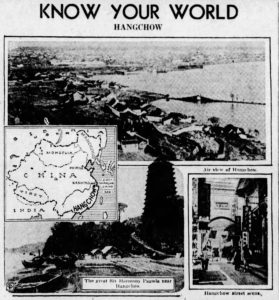
Posted: March 11th, 2017 | No Comments »
‘Know Your World’ was a US syndicated newspaper column that took different places internationally and showed readers what they were like – simple idea really in the days before google image…in May 1934 it was China’s turn….first Shanghai (you can click the image to enlarge)…and then Hangchow (tomorrows post)….
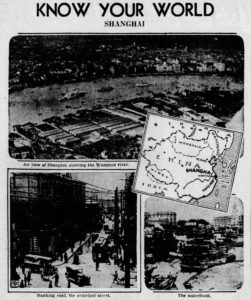
Posted: March 10th, 2017 | No Comments »
Out of China: How the Chinese Ended the Era of Foreign Domination
Professor Robert Bickers (University of Bristol)
Date:13 March 2017Time: 5:00 PM
Venue: Russell Square: College Buildings Room: G3

It’s only eighteen years since the end of the era of the Chinese ‘treaty ports’. In 1999 the last foreign-controlled outpost, Macao — the first to have been detached from Chinese control — was formally returned. In this talk Robert Bickers will draw on his new book, Out of China, to highlight key moments in the history of the decline of foreign power in China, its awkward persistence into the 1990s, and its enduring legacies.
more details – here
Posted: March 9th, 2017 | 2 Comments »
I came across this plate in the front of a book the other day at The London Library in St James’s. However this plate is for the Royal Central Asian Society – a brief history of which is below. They had nice digs over at 8 Clarges Street, just off Piccadilly (though the original building is sadly gone and replaced by a rather nondescript modern office thing). The Royal Central Asian Society (originally, The Central Asian Society) became The Royal Society for Asian Affairs (RSAA) around 1975. I can only assume they handed their library over to be Incorporated within the London Library’s extensive collections.

The Central Asian Society was established in 1901. In November of that year, Dr Cotterell Tupp, Captain Francis Younghusband, Colonel Algernon Durand, and General Sir Thomas Gordon convened at Younghusband’s house in Gilbert Street, Grosvenor Square, London, to discuss the response to an informal prospectus they had circulated amongst friends during the previous month. They agreed that sufficient interest had been aroused and decided to formally distribute their prospectus for a new Society. The prospectus (“A Proposal to Establish a Central Asian Society”) began: “At present there is in London no society or institution which is devoted entirely to the consideration of Central Asian questions from their political as well as from their geographical, commercial or scientific aspect, though Societies such as the Royal Geographical and Royal Asiatic Society discuss these subjects incidentally. It is therefore proposed to establish a society to be called the Central Asian Society, with rooms, where those who either have travelled in Central Asia, or are interested in Central Asian questions, could meet one another.”
The “Central Asian questions” to which the Proposal referred derived from the political and diplomatic confrontation between Britain and Russia that continued throughout most of the nineteenth century. The confrontation was played-out in the Central Asian territories that lay between British India and Russia, and came to be known, after Kipling, as the “great game”. Many of the founding members and key figures of the Central Asian Society were active participants in the latter stages of this “game” of empires, as much of the material in the archive reflects.
On 1 January, 1975, the Society changed its name to The Royal Society for Asian Affairs, reflecting a shift of emphasis from narrowly Central Asian matters to an embrace of Asia as a whole. The shift of emphasis had already been marked (in 1970) by the renaming of the Society’s Journal as Asian Affairs. Formerly, Journal of the Royal Central Asian Society, the Society’s Journal has been published continuously since 1914. The present remit of the RSAA is the contemporary economic, political and social developments of every Asian country.
Posted: March 8th, 2017 | No Comments »
This picture was taken in 1936 by the well-known American China correspondent Laselle Gilman. He claimed she was a cabaret dancer and taxi-dancer in a Peking (or Peiping in 1936) cabaret – sadly he didn’t record her name or the establishment she worked in…
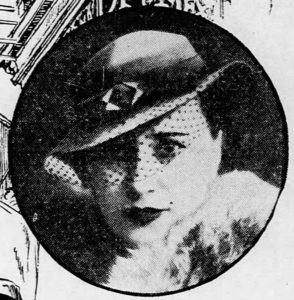
Posted: March 7th, 2017 | No Comments »
Jade was a massive business for the tourist and sojourner trade. Foreigners developed what Harold Acton term ‘collecting mania’ in China (in those days curios were abundant and exchange rates very favourable, though a fair bit of fake was floating around too then as now). Jade was top of the list….and so the Jade Store, craftily named the Jade Headquarters and perfectly situated on Nanking Road, opposite the Palace Hotel (now the Swatch Art Peace something or other Hotel). It also ran ads with the strap line, “The Most Interesting Store in Shanghai” in the 1920s. As with seemingly every curio store, they moved premises over the years, though always on Nanking Road (12A for a while, then 24, then in the late 30’s they moved to no.80 having been blown out by the bombs on Nanking Road in August 1937). The store’s hong name, by the way, was Fon Kong Kung Sze and, as well as obviously jade, they sold silverware and porcelain objets.
To drum up trade they also published a guide – What Everyone Should Know About Jade (January, 1939), by Bolton Lee and with a foreword by the esteemed Arthur de Carle Sowerby of the Royal Asiatic Society and the China Journal in Shanghai. Just $1 Mex. Apologies, but I know nothing about Bolton Lee.
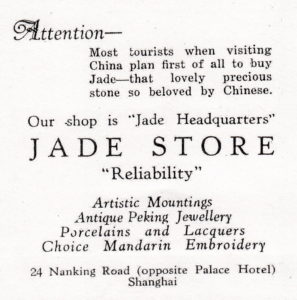
Posted: March 6th, 2017 | 1 Comment »
Book launch and lecture: Edward Denison, ‘Ultra-Modernism – Architecture and Modernity in Manchuria’
Ultra-Modernism – Architecture and Modernity in Manchuria
Authors: Edward Denison and Guangyu Ren
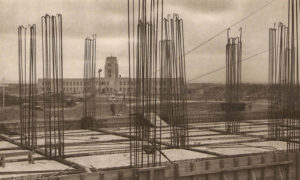
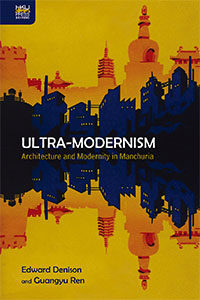
Join Dr Edward Denison, lecturer at The Bartlett School of Architecture, UCL, and Guangyu Ren for a discussion and launch of their latest book, Ultra-Modernism – Architecture and Modernity in Manchuria. The book is not only the first international publication to investigate this important but overlooked architectural history, but is also an attempt to question the very master narrative of architectural historiography that continues to prejudice western experiences over others.
This is a free event. Please reserve your place on the Eventbrite website.
About the book
History is a record of power. The writing of history is a privilege of life’s winners – one which is denied to its losers. The modernist canon bears exceptional testimony to this inequity. Constructed throughout the twentieth century – modernism’s century – it privileged western ideas, methods and territories while suppressing others. For architecture, the consequence is a world constructed in the west’s image and constricted by its gaze. Manchuria – the north-eastern region of China formerly occupied by Japan – epitomises this partiality. In an Anthropocenic epoch in which our knowledge of the built environment and its history is necessarily planetary, this partiality exposes the canon’s deficiency.
Japan was the first non-western nation to fully embrace modernisation and, like many western nations before it, it enlisted empire. Defeating China and Russia, and outmanoeuvring the western powers, Japan’s occupation of Manchuria from 1905–1945 precipitated unprecedented investment in city planning and architecture. So significant was the scale and scope of this encounter, Japan called it Ultra-Modernism – a term deliberately distinguishing it from western precedents.
In 1932, Japan formally created the new state of Manchukuo, but imperial dreams swiftly turned into a nightmare and global conflict. The dropping of atomic bombs on Hiroshima and Nagasaki not only brought an end to Manchukuo, but marked the dawning of an entirely new age – the Anthropocene – in which humankind’s impact on the world became global, including our capacity to not only create entire modern cities, but also to destroy them in an instant. Ultra-Modernism – Architecture and Modernity in Manchuria is an attempt not merely to narrate one overlooked history, but to question the master narrative.
more details here








